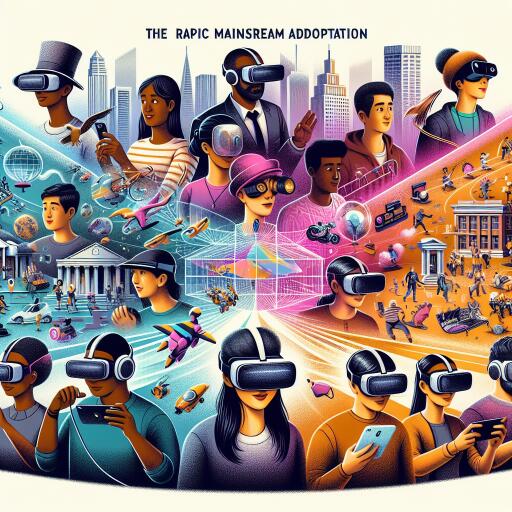Exploring the Evolution of AR and VR: From Novelty to Necessity
The realms of Augmented Reality (AR) and Virtual Reality (VR) have long captivated the imagination, evoking visions of a future where digital and physical worlds collide. What once was the purview of science fiction is now steadily weaving itself into the fabric of everyday life, manifesting as indispensable tools for both business innovation and consumer entertainment.
The New Frontier: Augmented and Virtual Reality
In recent years, AR and VR technologies have undergone transformative development, propelling them from the fringes of novelty to the mainstream of technological adoption. The latest VR headsets, infused with cutting-edge software, are not just for immersive gaming experiences but also serve as platforms for remote work collaborations, educational simulations, and innovative ways to control machinery from afar.
Parallel to VR’s evolution, AR technology is forging its path by enhancing real-world interactions rather than replacing them. AR devices overlay digital information onto the physical environment, aiding a broad spectrum of professionals—from pilots navigating the skies to surgeons performing complex procedures—by providing critical data directly within their line of sight.
Enhancing Senses and Shaping Experiences
As hardware and software providers push the boundaries of what’s possible, enhancements to VR and AR platforms aim to deliver more immersive, realistic experiences. Innovations include tactile feedback devices that mimic the sense of touch, enveloping soundscapes, and even olfactory elements that add a new dimension to virtual worlds, compelling the mind to fully believe in the constructed reality.
Transforming Business Operations and Workflows
The maturation of AR and VR technologies is finding practical applications across various industries, reshaping traditional business practices. Remote workers can now virtually inhabit meeting rooms, sharing a space with colleagues thousands of miles away as if they were physically present. AR, on the other hand, is revolutionizing on-site repairs and maintenance, enabling less experienced personnel to perform complex tasks under the remote guidance of experts, thereby significantly reducing operational costs and eliminating geographical constraints.
Consumer Applications: A World of Possibilities
On the consumer front, AR and VR are expanding the horizon of digital entertainment and social interaction. Virtual reality offers an alternative venue for concerts, shopping, or even distant travel—translating real-world experiences into the digital realm. Additionally, VR has the potential to revolutionize mental health and therapy practices by providing controlled, immersive environments for overcoming anxieties and fears with professional support.
The Network Impact: Preparing for the Data Deluge
As AR and VR technologies ascend from novelty to norm, the strain on data networks will intensify. Delivering high-quality, seamless VR and AR experiences demands a colossal amount of bandwidth. From streaming 8K video to handling complex three-dimensional data, the infrastructural backbone of digital networks will be the linchpin for the unimpeded growth of these technologies.
Businesses and consumers alike must therefore scrutinize and fortify their network capabilities, leveraging high-capacity connections and the latest in wireless technology to keep pace with the demands of AR and VR applications. As we march toward an era of ubiquitous AR and VR, ensuring robust, high-speed network access becomes not just beneficial but essential for tapping into the vast potential of these technologies.
Conclusion: A Gateway to New Realities
AR and VR technologies are no longer just the fantasies of science fiction but are rapidly establishing themselves as mainstream tools indispensable for the next generation of businesses and consumer experiences. They offer a glimpse into a future where digital enhancements and virtual experiences are not just common but integral to our daily lives. As these technologies continue to evolve and integrate, they herald a new era of interaction, immersion, and innovation.










